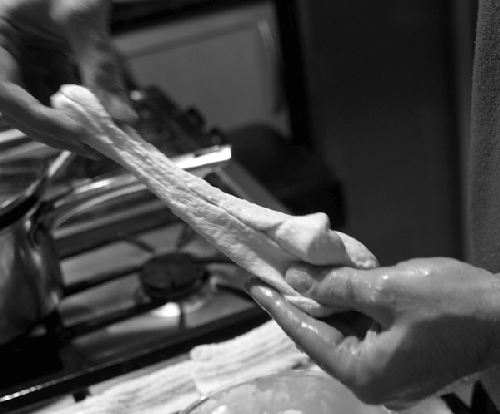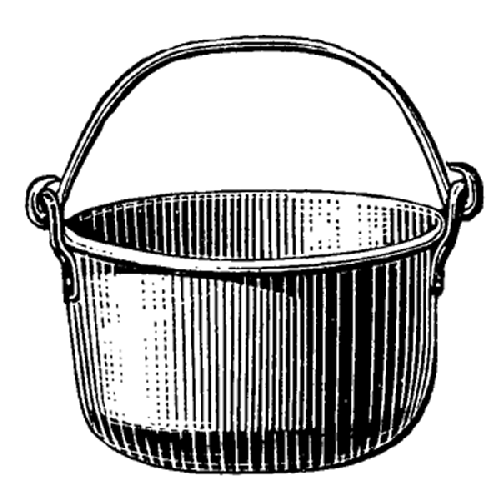Making your own cheese is neither a time-saver
nor a money-saver, but it’s a great experiment to see how closely related two
seemingly different things can be. Cheese is made from
curds—coagulated casein proteins—in milk. The whey is separated out via an
enzymatic reaction, allowing the curds to be cooked and then kneaded, stretched, and
folded to create that characteristic structure found in string
cheese.

Note:
American string cheese is really mozzarella cheese that’s been formed into long,
skinny logs. Other countries make string cheese using goat or sheep’s milk, sometimes
adding in cumin seeds and other spices, and often braid several thin strands
together.
You’ll need to order a few chemicals to do this. In two small bowls or
glasses, measure out and set aside:
½ teaspoon (1.4g) calcium chloride dissolved in 2
tablespoons distilled water
¼ tablet rennet, dissolved in 4 tablespoons distilled
water (adjust quantity per your rennet manufacturer’s
directions)
In a stock pot, mix and slowly heat to 88°F / 31°C:
1 gallon (4 liters) whole milk,
but not
ultra-pasteurized or homogenized
1½ teaspoon (12.3g) citric acid
¼ teaspoon (0.7g) lipase powder
Note:
Where it says “not homogenized,” it really means not homogenized. (The milk can,
and probably should, be pasteurized, though.) If you use homogenized milk, you’ll end
up with a squeaky mess that vaguely resembles cottage cheese but doesn’t melt
together. The homogenization process disrupts the protein structures such that they
can no longer bind together.
Once the liquid is at 88°F / 31°C, add the calcium chloride and rennet mixtures and
continue to slowly heat to 105°F / 40.5°C, stirring every few
minutes. At this point, you should begin to see curds separating from whey.
Once the liquid is at 105°F / 40.5°C, remove from heat, cover the pot, and wait 20
minutes. At this point, the curds should be fully separated from the whey; if not, wait
a while longer.

Transfer the curds to a
microwave-safe bowl using a slotted spoon, or strain out the whey and transfer it from
your strainer. Squeeze as much of the whey out of the curd as possible, tipping the bowl
to drain the liquid. Microwave on high for one minute. Squeeze more of the whey out. The
cheese should now be sticky; if not, continue to microwave in 15-second increments until
it is warm and sticky (but not too hot to handle).
Add ½ teaspoon flaked salt to the cheese and knead. Microwave for one more minute on
high until the cheese is around 130°F / 54.4°C. Remove and stretch, working it just like
playing with silly putty: stretch, fold in half, twist, and stretch again, over and
over, until you’ve achieved a stringy texture.
Notes
The addition of acid denatures proteins in the milk, helping curd
formation. Citric acid is commonly used. For similar reasons, many cheeses use
rennet—traditionally derived from calf stomach—because it has a number of enzymes
that break down proteins in the milk.
The lipase powder is not chemically required,
especially given that animal-based rennet contains lipase. Your rennet source
might not contain it, however, and the lipase enzyme is responsible for the
characteristic flavor of mozzarella because of the way it cleaves the fats in
milk. For a lacto-vegetarian mozzarella cheese, use vegetable-based rennet and
skip the lipase powder, but note that the cheese will not have the traditional
flavor.
